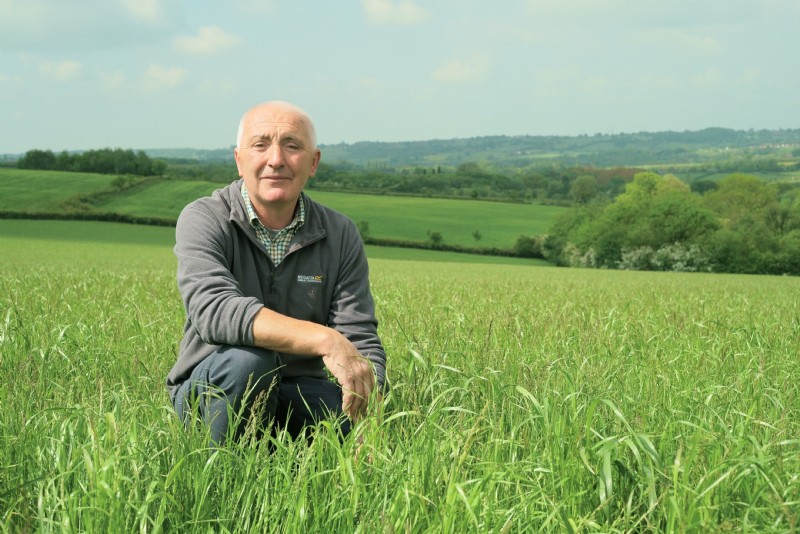

Soil is vital capital on any farm and most farmers understand the need to look after it’s health, but for sheep farmer Philip Langton there’s an added imperative. Not just because of the high quality products demanded by his customers - he has specialised in Hay and Haylage for the past 20 years, selling to event and show-jumpers - but he sees the soil as such a precious resource because it is in such short supply on his farm. ‘We’ve got so little soil we have to look after we have got,’ he says.
Philip’s 1000 acre farm lies near Belper in Derbyshire, in the industrial heartland of the Midlands, and Philip is reminded of this heritage every day, since nearly half of his fields stretch out over ex Coal Board land that has been reclaimed after open cast mining.
‘This is very difficult land to grow grass on,’ says Philip, who’s been farming all his life. ‘British Coal put it back to grass, but it is heavy clay and gets very waterlogged, is easily compacted and very difficult to plough. There’s only about three inches of soil above the clay.’
But it’s not at all impossible to farm it, as he has proved. ‘The grass will grow if farmed right, but it takes clever farming,’ Philip says proudly.
This ‘clever method’ involves 1000 sheep and a rotation of wheat, barley, and a 4-5 year ryegrass ley, with measures taken to extend the life of the ley by over-seeding because the land takes such an effort to plough. The method is as follows: When it comes to reseeding the land, Philip grows an arable break crop of wheat for the first year, then barley the following year.
Then it’s time to sow the grass seed. Philip has used Cotswold Seeds for 20 years, opting for the Cotswold Maximum D-Value ley with a small amount of clover added to counteract the hardness of the ground for reseeds. Sowing takes place August-September when Philip drills with a Moores Uni-Drill and roller, drilling first one way and then the other to make a crisscross pattern that is a good way to get the seed going and ultimately producing a thick sward with a lot of ground cover.
The clover content helps to keep the ground nice and solid and the sheep love it, so it’s a win win. Philip fertilises with straw based muck from horse customers, phosphate and potash. ‘This is very important,’ he says. ‘As are the sheep.’ He grazes 2000 breeding ewes to thicken the sward and keep it in good condition. ‘We have to treat it with respect,’ he says.’ If we create ruts then the rut stays in until the next reseed.’
Lambs arrive in March and the sheep graze the land until late spring, then in May the fields are shut up for hay and haylage production and the first cut is taken in June.
Philip says it’s a ‘simple operation’ and the respect he shows the land is certainly paying off. ‘The grass is waist high and we’ve successfully extended the life of the 4-5 year ley with over-seeding. We’ve had 30 acres that have been down for 8 years now. The sward is as thick as an old pasture field,’ Philip says. ‘Quite unbelievable.’
‘I always say, do you grow grass, or do you let grass grow? Too many farmers do the latter and don’t manage their grass properly.’
Date Posted: 16th February 2017



